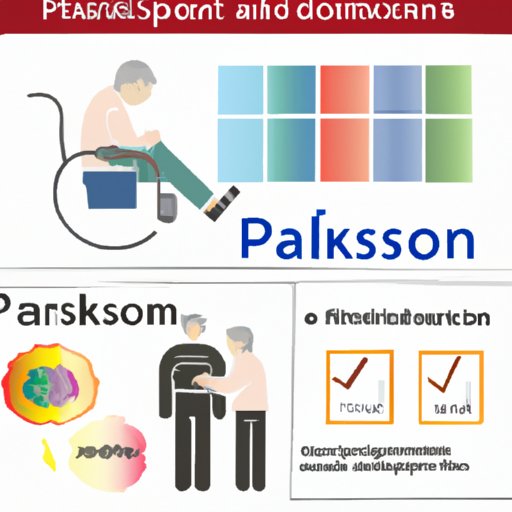
Introduction
Parkinson’s disease is a chronic neurodegenerative disorder affecting millions of people worldwide. It is a progressive disease that can cause tremors, stiffness, and difficulty with movement and coordination. Early diagnosis is crucial for effective treatment and management of symptoms. In this article, we’ll explore how to identify Parkinson’s disease and what to expect during the diagnostic process.
Detecting Parkinson’s: Symptoms to Look Out For
The first step in diagnosing Parkinson’s disease is recognizing the symptoms. The most common signs of Parkinson’s disease include:
- Tremors or shaking, especially in the hands, fingers, or chin
- Stiffness or rigidity in the arms, legs, or trunk
- Difficulty with balance and coordination
- Slow movements
- Difficulty with fine motor skills, such as buttoning a shirt or writing
- Other non-motor symptoms such as depression, anxiety, and sleep disturbances can also occur
It’s important to track symptoms and changes over time and seek medical attention if they persist or worsen.
A Comprehensive Guide to Diagnosing Parkinson’s Disease
A diagnosis of Parkinson’s disease is typically made by a neurologist or movement disorder specialist. Diagnostic criteria include:
- Presence of two or more of the primary motor symptoms (tremors, stiffness, slowness, and difficulty with balance and coordination)
- Gradual onset and progression of symptoms
- Symptoms that are not caused by other medical conditions or medications
In addition to meeting these criteria, physicians will also perform a differential diagnosis, ruling out other conditions with similar symptoms such as essential tremor or Parkinson-plus syndromes.
The Diagnostic Process: How Doctors Identify Parkinson’s
The diagnostic process for Parkinson’s disease begins with a thorough medical history and physical examination. Physicians will observe the patient’s movements and assess their coordination and balance, as well as look for tremors or stiffness in the limbs. Standardized rating scales such as the Movement Disorder Society-Unified Parkinson’s Disease Rating Scale (MDS-UPDRS) may also be used to assess symptoms and track progression over time.
Identifying Parkinson’s: Medical Tests and Examinations You Should Know About
Medical tests and exams that may be used to diagnose Parkinson’s disease include:
- Blood tests to rule out other conditions
- Neurological exams to assess reflexes, muscle tone, and balance
- Imaging studies such as computed tomography (CT) scans or magnetic resonance imaging (MRI) to rule out other neurological conditions
- Dopamine transporter imaging to assess dopamine activity in the brain (a hallmark of Parkinson’s disease)
It’s important for patients to involve specialists in their care, such as neurologists or movement disorder specialists, to ensure an accurate diagnosis and appropriate treatment plan.
Recognizing Parkinson’s: Early Signs and Indicators of the Disease
Early detection and treatment of Parkinson’s disease can help slow progression and improve quality of life. Early signs and symptoms that may precede a formal diagnosis include:
- Loss of smell
- REM sleep behavior disorder
- Mood changes
- Constipation or other gastrointestinal issues
While these symptoms can be caused by a variety of other conditions, they may indicate an increased risk for Parkinson’s disease and should be discussed with a healthcare provider.
Getting a Parkinson’s Diagnosis: What to Expect During Your Medical Assessment
If you’re experiencing symptoms of Parkinson’s disease, it’s important to schedule an appointment with a healthcare provider. During your medical assessment, you can expect:
- A thorough medical history
- A physical examination
- Referral to a specialist for further evaluation if necessary
- Medical tests and imaging studies as appropriate
It’s important to communicate openly with your healthcare providers about your symptoms and concerns to ensure a proper diagnosis and treatment plan.
Conclusion
Early diagnosis is key to effective management of Parkinson’s disease. If you’re experiencing symptoms, don’t hesitate to seek medical attention. With the help of specialists and medical tests, an accurate diagnosis can be made and appropriate treatment options can be explored. There is hope for the future with ongoing research and advances in treatment.





